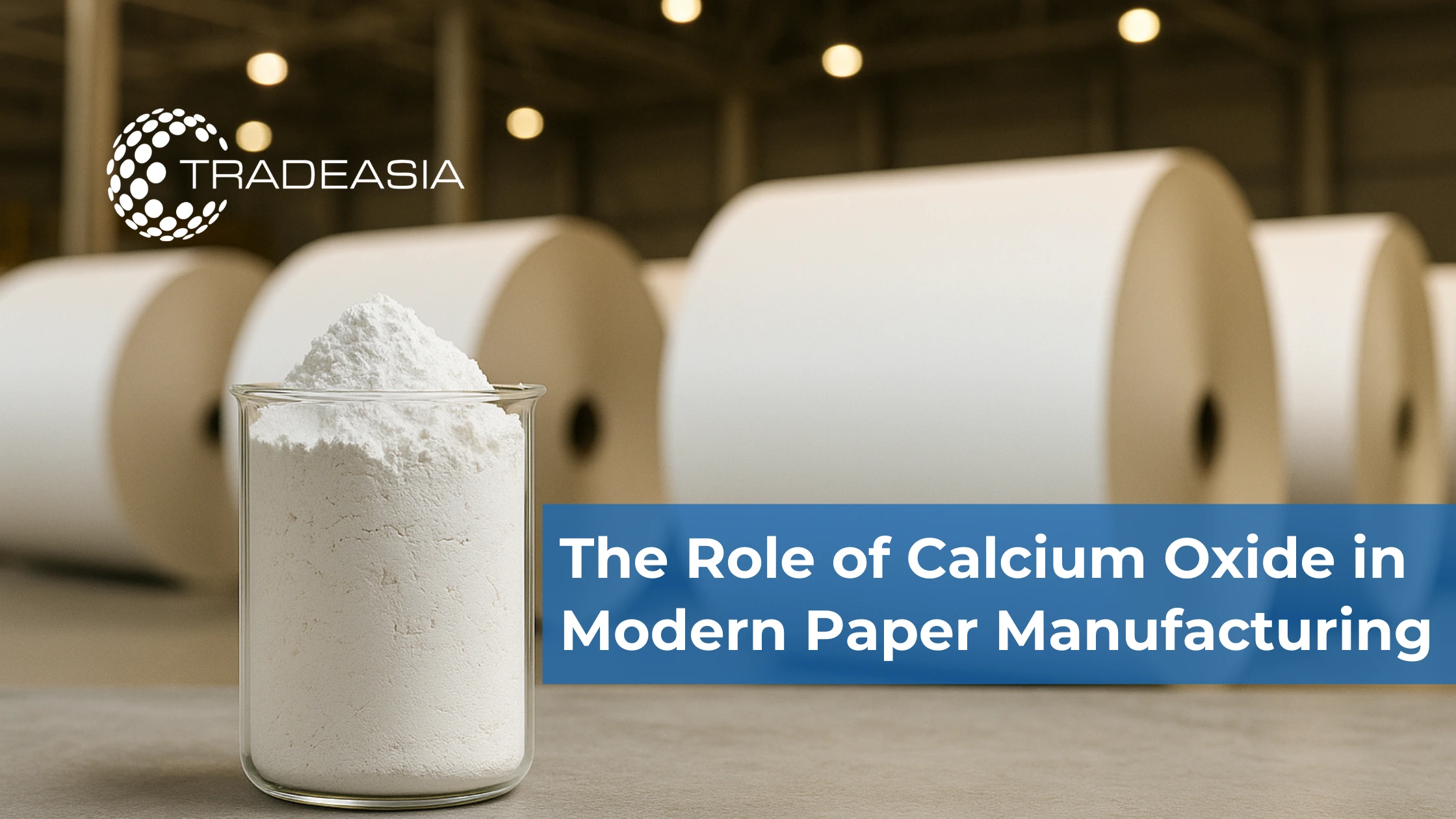Introduction to Calcium Oxide in Paper Manufacturing
Calcium oxide (CaO), commonly known as quicklime, is a critical chemical in modern paper manufacturing. Its versatility, reactivity, and cost-effectiveness make it an essential component in processes ranging from pulp production to pH regulation. In 2025, the global paper industry continues to rely heavily on calcium oxide due to its role in producing high-quality paper products while meeting environmental compliance standards.
Overview of the Global Paper Industry in 2025
The global paper industry is undergoing significant transformation. While demand for traditional printing and writing papers is declining, packaging, tissue, and specialty paper segments are expanding rapidly. The shift toward sustainable production methods and recyclable packaging materials has intensified the need for efficient chemical inputs like calcium oxide.
Asia-Pacific leads in production and consumption, followed by Europe and North America, with emerging markets in Africa and Latin America showing strong growth potential. In all regions, calcium oxide remains integral to achieving quality consistency and operational efficiency in paper mills.
Chemical Properties of Calcium Oxide Relevant to Paper Production
Calcium oxide is a white, caustic, alkaline crystalline solid with high reactivity to water, producing calcium hydroxide (slaked lime). Its key properties for paper manufacturing include:
-
Strong alkalinity for pH adjustment and chemical pulping.
-
Reactivity for transforming waste byproducts into reusable forms.
-
Purity and low contaminant levels that prevent paper defects.
These properties allow CaO to play a dual role: as a processing aid in pulp preparation and as a quality enhancer in the final product.
Applications of Calcium Oxide in Paper Manufacturing
Pulp Processing
Calcium oxide is essential in the chemical recovery cycle, particularly in kraft pulping. It is used to regenerate sodium hydroxide from sodium carbonate in the causticizing stage, enabling closed-loop chemical use and cost savings.
pH Control and Neutralization
Maintaining optimal pH levels in pulp and paper processes is critical for fiber stability and equipment longevity. Calcium oxide neutralizes acidic streams, preventing corrosion and improving paper whiteness.
Fiber Quality Improvement
Calcium oxide aids in removing impurities from fibers, enhancing bonding properties and increasing the strength and brightness of the finished paper.
Global Market Trends for Calcium Oxide in Paper Industry
In 2025, the global calcium oxide market for the paper sector is stable, with modest growth driven by:
-
Expansion of sustainable packaging.
-
Investments in modern paper mills.
-
Stricter environmental regulations prompting chemical efficiency.
While the overall chemical lime market serves multiple industries, paper manufacturing remains a consistent demand segment, ensuring steady trade flows.
Key Demand Drivers
Growing Packaging Paper Segment
E-commerce and retail packaging demand is pushing mills to increase output, boosting calcium oxide consumption for pulp processing.
Environmental and Sustainability Regulations
CaO supports eco-friendly production through efficient chemical recovery and reduced waste, aligning with global green manufacturing goals.
Technological Advancements in Paper Mills
Automation, process control systems, and improved lime kiln technologies increase calcium oxide utilization efficiency.
Supply Chain and Global Trade Flows
Calcium oxide is produced from high-purity limestone through calcination. Major exporters include China, the U.S., and European nations, with logistics efficiency playing a key role in cost competitiveness. Paper mills often source calcium oxide through long-term supply contracts to ensure quality consistency.
Pricing Trends and Cost Factors
In 2025, calcium oxide prices remain stable, though influenced by:
Stable supply chains and bulk contracts mitigate volatility for large paper producers.
Challenges Facing the Market
-
Environmental Impact of Production: High energy use in lime kilns.
-
Quality Consistency: Impurities can affect paper quality.
-
Competition from Alternatives: Other alkaline chemicals in niche applications.
Opportunities for Suppliers and Buyers
-
Offering high-purity, low-contaminant grades for premium paper products.
-
Expanding supply capabilities to emerging paper manufacturing regions.
-
Integrating technical support services for paper mills.
Conclusion and Future Outlook
Calcium oxide will remain a cornerstone chemical in paper manufacturing, supporting efficiency, quality, and sustainability. The 2025 global market offers stable growth opportunities, especially for suppliers who can meet evolving environmental standards and partner closely with paper producers to optimize usage.

Leave a Comment